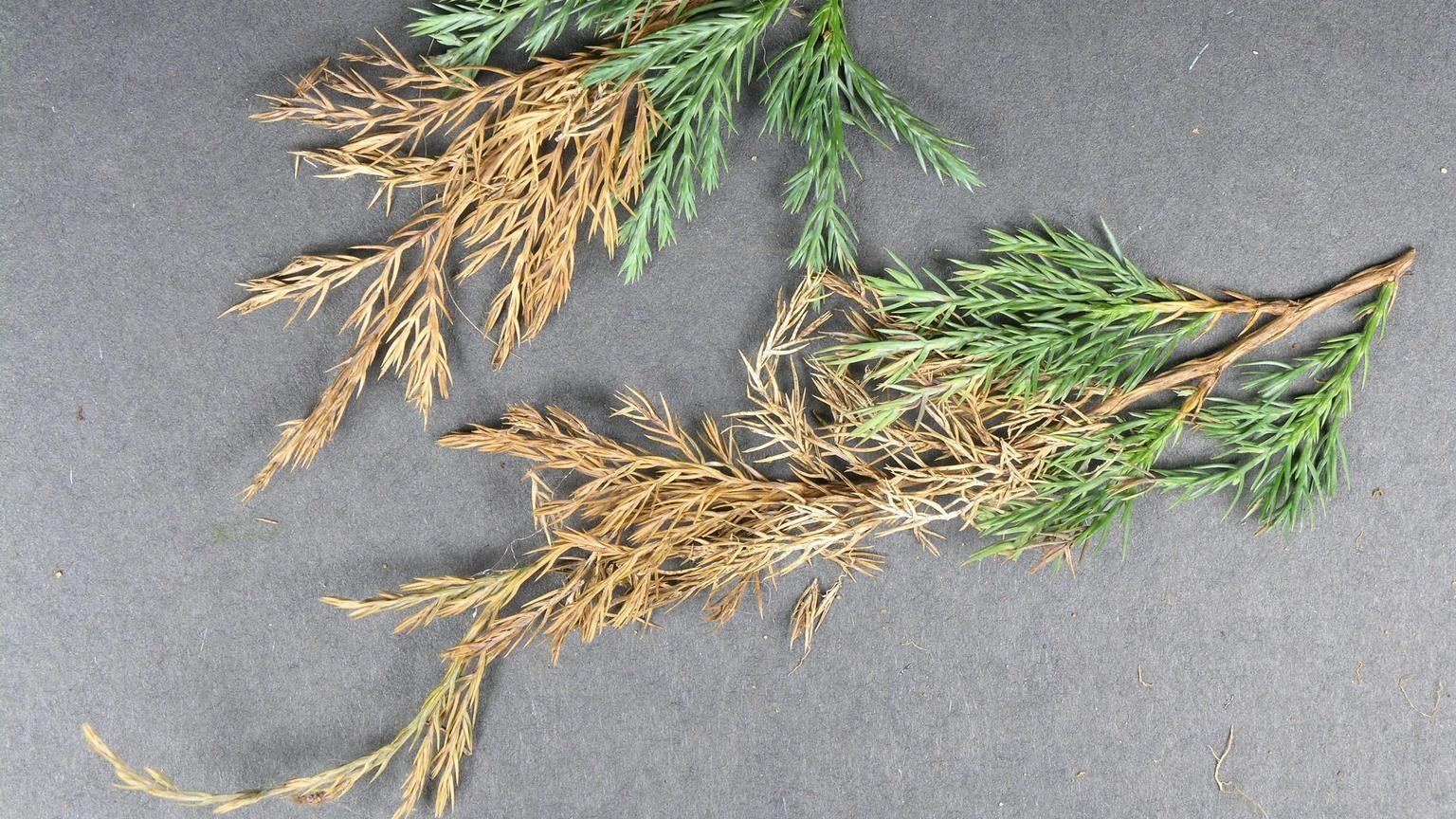Key points
- Juniper twig blights caused by the fungi Phomopsis and Kabatina are two of the most damaging diseases to junipers in the northeast.
- Susceptible species include eastern, red, and white cedar varieties as well as Chinese, common, creeping, needle, Rocky Mountain, savin, shore, and Utah junipers. To a lesser degree, these diseases can also infect American and Oriental arborvitae, hinoki cypress, and English yew.
- There is however wide variation between susceptible and resistant cultivars within these plant groups.
- Very few plant cultivars are resistant to both diseases.
- Cultivars resistant to both kabatina and phomopsis include Juniperus chinensis 'Phitzeriana aurea' and J. chinensis var. Sargentii 'Glauca'.
Phomopsis blight
- The primary symptom of Phomopsis blight is the browning and dieback of new shoot tips in the spring.
- Phomopsis blight is caused by the fungus Phomopsis juniperovora.
- The fungus over winters on previous blighted twigs and bark.
- Primary infection occurs during cool wet spring weather but occasional fall infection is possible.
- Spores are produced from small, black fungal fruiting structures on these old blighted shoots.
- During wet rainy weather, spores are released and splashed onto the new young growth.
- Older, unwounded shoots are not susceptible. Blighted twigs first turn pale green and are brown by early summer. Shoots are usually killed back to the previous season's wood.
- Sunken dark lesions called cankers are formed at the junction of live and dead wood.
Kabatina blight

Juniper twig blight caused by fungus Kabatina. Photo: Penn State Department of Plant Pathology & Environmental Microbiology Archives , Penn State University, Bugwood.org
- Kabatina blight primarily attacks and kills juniper twigs 1 year or older during warm, summer weather, unlike Phomopsis blight, which usually kills new shoots in the spring.
- Kabatina blight is caused by the fungus Kabatina juniperi.
- In juniper cultivars that take on purple-colored winter foliage, shoots infected by the Kabatina fungus late in the season will remain green.
- Blighted shoots eventually turn brown by late winter and provide a source of infection during the next growing season.
- Small, black fungal fruiting bodies that produce infective spores form on the blighted twigs.
- During wet weather, spores are released and washed onto additional stems and twigs.
- Kabatina requires a small wound to invade the plant, usually caused by insect or mite feeding, abrasion by adjacent branches, winter damage or pruning cuts.
Management strategies
- Removal of old dead twigs and branches is very important for the control of both diseases.
- Previously infected dead shoots should be removed early in the spring before new growth begins to lessen the number of infective spores.
- The best management option is to select resistant juniper cultivars, however, few cultivars are resistant to both diseases.
- Phomopsis blight can be controlled with registered fungicides if applications are made before new growth starts in the spring and continued as long as new growth is produced.
- However, at present, there are no fungicides effective for Kabatina blight.
Rev. 2020
